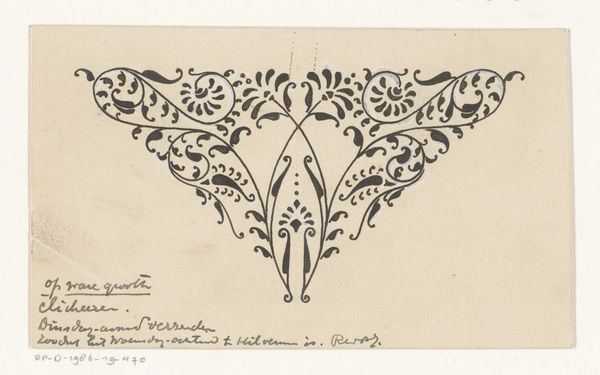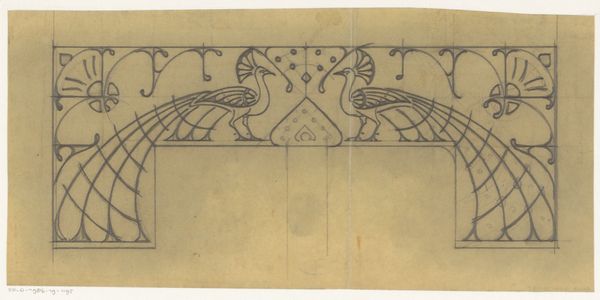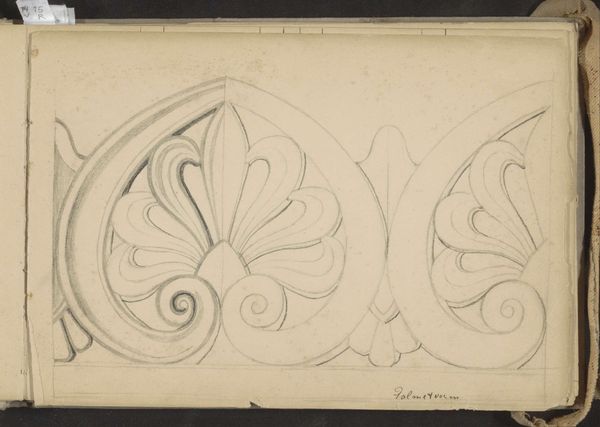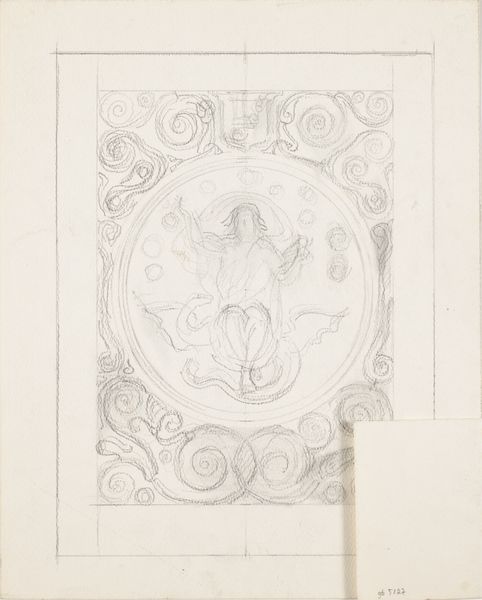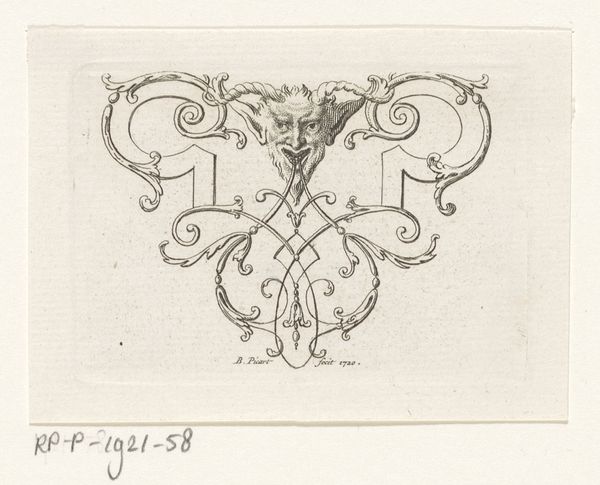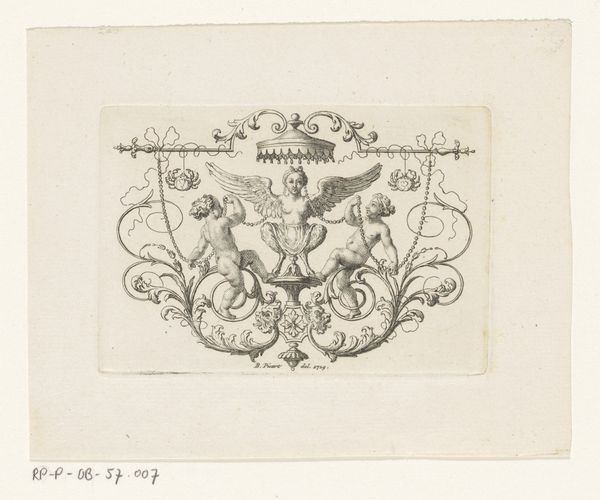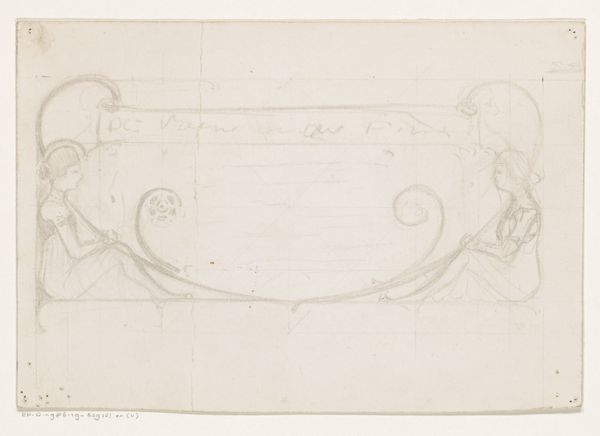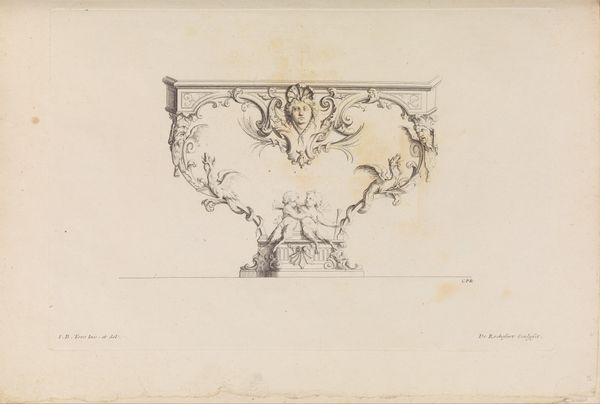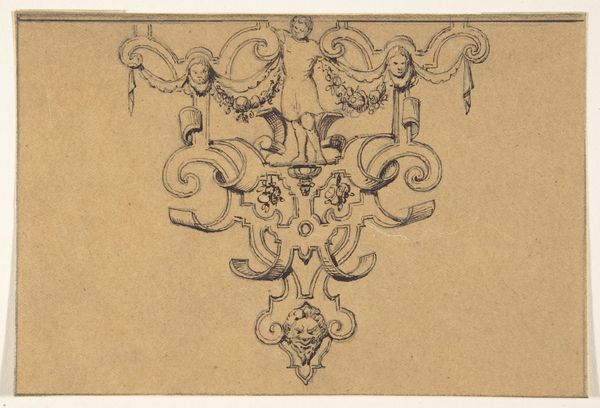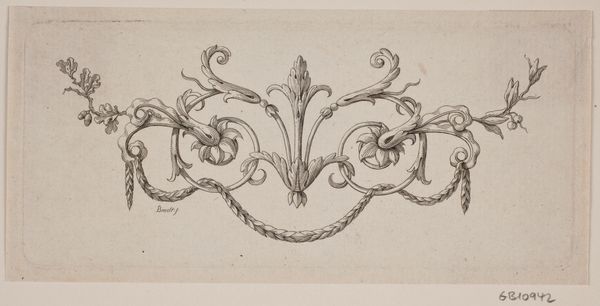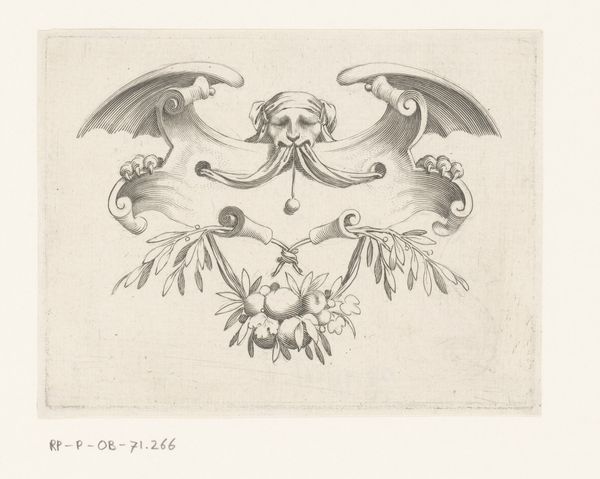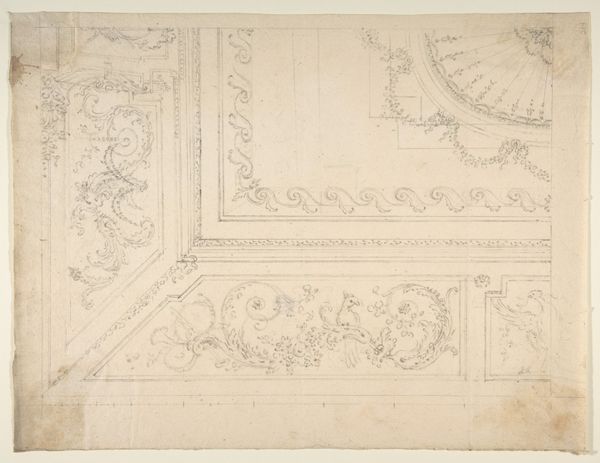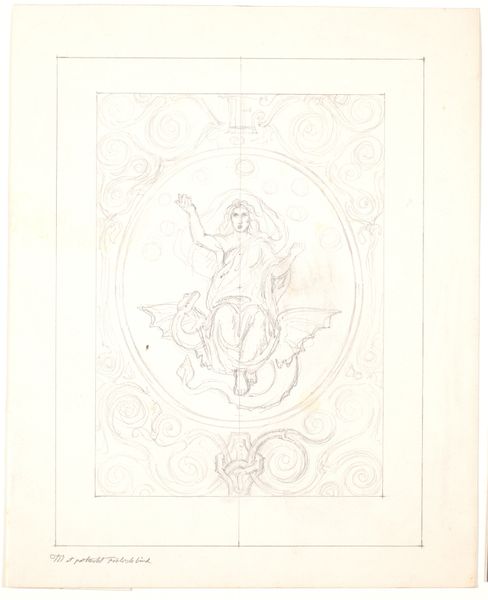
Dekorativt udkast til et dørstykke. Kvindetorso med vinger og fiskehaler, sandsynligvis en sirene eller et fantasivæsen symboliserende elementerne luft og vand 1809
0:00
0:00
drawing, pencil
#
drawing
#
neoclacissism
#
water colours
#
allegory
#
figuration
#
pencil
Dimensions: 218 mm (height) x 308 mm (width) (bladmaal)
Curator: Looking at this preparatory drawing by Nicolai Abildgaard, "Dekorativt udkast til et dørstykke," dated 1809, one can’t help but reflect on how classical myths informed decorative arts during the Neoclassical era. Editor: It’s such a delicate work, almost ethereal. The soft pencil lines create a sense of movement, but the creature itself feels rather unsettling. What is it meant to be, exactly? Curator: It's believed to depict a siren or some other fantastical being. Her composite form—human torso, wings, and a fishtail—likely symbolized the elements of air and water. These hybrid creatures were popular allegorical figures in this period. Abildgaard would have been very familiar with this iconography and the socio-political symbolism behind the images. Editor: I see the appeal, but it's the *making* of the object I’m immediately drawn to here, especially as it's a preliminary sketch. Note how Abildgaard uses such spare lines to create form. And to think, this was a design destined to become something architectural! Where would this door have been located, and for whom? I wonder who commissioned this drawing? Curator: That is a great question. These ornamental pieces, found in residences of the bourgeois class and above, reinforce societal values by associating families and people in power with notions of Greek nobility. Often, the art they interacted with showed men conquering nature and people with violence, which normalizes inequality through these symbols. Editor: Exactly. And even the use of something like a simple pencil relates to the increasing accessibility of materials that spurred new approaches to creating. This wasn’t necessarily some rare pigment requiring extensive labor to produce! In a very tangible sense, materiality and methods affected who could be an artist and what they could produce. Curator: Absolutely, considering the social context adds another layer of significance to appreciate how art acts as a mirror reflecting, but also influencing, values. Abildgaard’s artwork serves as a looking glass, showing the pervasiveness of classicism but also how myths can be reinterpreted through distinct social and historical lenses. Editor: Indeed. It's amazing how such a fragile, preliminary sketch invites reflection on themes as diverse as mythology, class structure, art production and the changing roles for artists. It becomes a document reflecting more than one singular creator or aesthetic position.
Comments
No comments
Be the first to comment and join the conversation on the ultimate creative platform.
